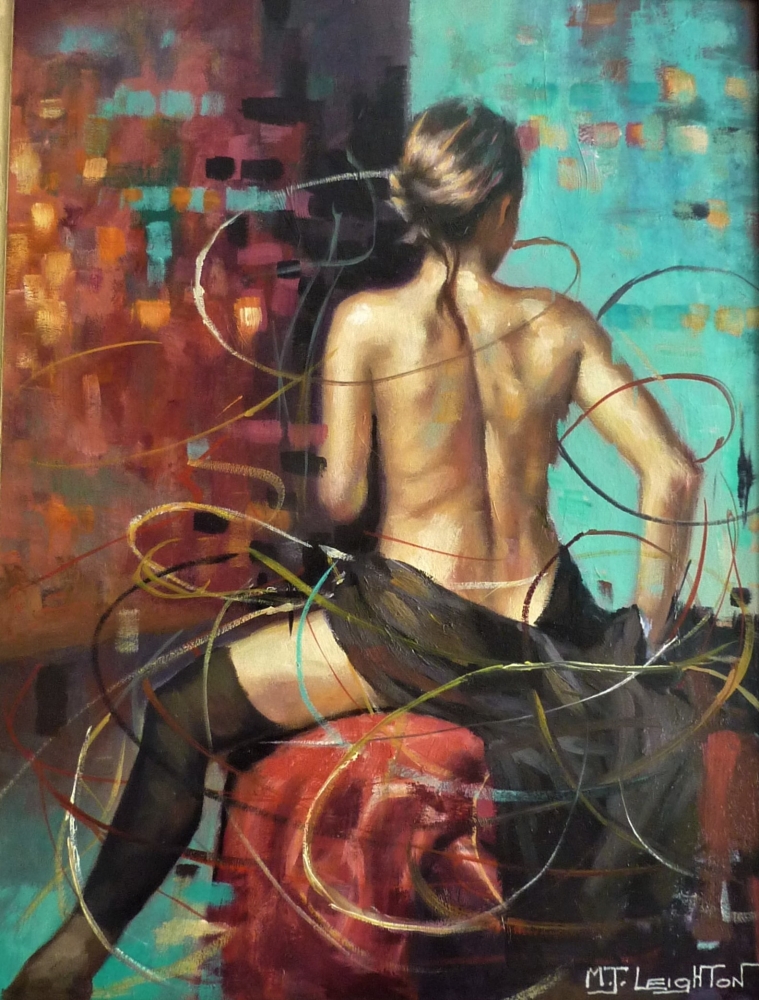Maintaining and preserving your collection. Navigating the art insurance landscape.
Once a collection is established, the prudent art collector turns their attention to safeguarding their invaluable treasures. This chapter delves into the critical aspects of art insurance, addressing the unique needs and risks associated with maintaining and preserving an art collection.

Flashes of Colour. Martin LeightonOil
Understanding the importance of art insurance: Art insurance goes beyond mere financial protection; it is a crucial tool for preserving the cultural and emotional value of your collection. The art market's dynamic nature, coupled with external risks like theft, natural disasters, and unforeseen damages, necessitates a comprehensive insurance strategy.
The complexities of valuation: Valuing artworks accurately is a fundamental step in the insurance process. Affluent art collectors often deal with high-value pieces, making precise valuation challenging. Insurance policies must reflect the current market value, considering factors such as provenance, historical significance, and the artist's reputation. Regular appraisals become a standard practice to ensure coverage aligns with the collection's evolving value.
Specialized art insurance policies: Generic insurance policies may fall short in adequately covering the unique risks associated with art. Affluent collectors typically opt for specialized art insurance policies tailored to the specific needs of their collections. These policies often include coverage for accidental damage, theft, vandalism, and even depreciation, providing a comprehensive shield against potential losses.
Risk mitigation strategies: Beyond insurance, collectors employ various risk mitigation strategies to protect their investments. Implementing advanced security measures, including surveillance systems, temperature and humidity control, and secure storage facilities, adds an extra layer of protection. Collaborating with professionals who specialize in art conservation can further mitigate risks associated with environmental factors.
Navigating the claims process: In the unfortunate event of a loss or damage to an artwork, navigating the claims process becomes a critical aspect of art insurance. Understanding the intricacies of filing a claim, providing necessary documentation, and collaborating with insurance professionals ensures a smoother and more efficient resolution. It's imperative for collectors to maintain detailed records, including appraisals, purchase receipts, and provenance documents, to facilitate the claims process.
Evolving risks in the digital age: In an era dominated by digital advancements, new risks have emerged for art collectors. Cybersecurity threats, online fraud, and the rise of non-fungible tokens (NFTs) necessitate a reevaluation of insurance coverage. Art collectors are increasingly exploring insurance solutions that address the evolving risks associated with digital assets and virtual transactions.
Balancing cost and coverage: Art insurance is an investment in protecting one's passion and financial holdings. Balancing the cost of insurance premiums with the extent of coverage is a delicate consideration. Working closely with insurance professionals who specialize in art can help collectors tailor policies that strike the right balance between affordability and comprehensive protection.
The role of professional advice: Navigating the art insurance landscape can be complex, and seeking professional advice is invaluable. Insurance brokers with expertise in art can provide personalized guidance, ensuring that collectors make informed decisions about coverage, risk mitigation, and the overall preservation of their collections.
As we delve into the intricacies of maintaining and preserving an art collection, art insurance emerges as a cornerstone in the responsible stewardship of cultural treasures. In the chapters that follow, we will continue to explore the multifaceted aspects of art collecting, with an emphasis on informed decision-making and a commitment to the longevity of artistic legacies.
